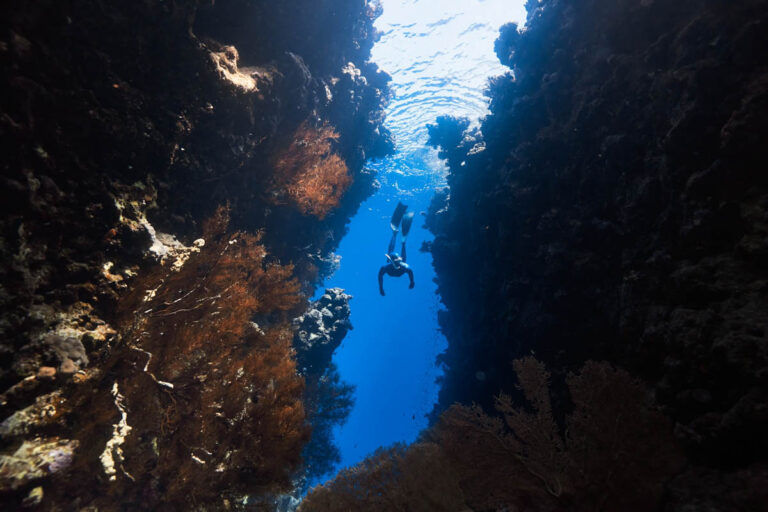Now that you’ve earned your certification in scuba diving, the undersea world is your oyster.
Scuba diving requires knowledge, skills and training. While you’ve learned the basics, how you interact with the ocean is the deciding factor between a safe and adventurous experience or a nightmare you’d rather choose to forget.
In this article, we’ll explore diving sites across the globe that are perfect for beginners.
The Gulf of California
Probably one of the most underrated diving sites in the world, the Gulf of California is an underwater marvel for novice and pro scuba divers.
Also known as the Sea of Cortez, Travel + Leisure says a popular entry point to dive in is Mexico’s Baja California. The tropical and temperate zones ensure smooth sailing from the coast.
Red Beard Sailing suggests using an inflatable boat like the Takacat LX Series to reach the diving spot. Versatile and uncompromising on quality, the fast-bailing transom for compact storage is unmatched in the inflatable boat market.
Although not recommended, some divers use portable sailboats to get to dive sites. To ensure the boat is user-friendly, enquire about sailing accessories so the boat feels sturdy and can carry all your gear.
If you’re in the market to purchase a boat for diving, make sure it’s money well spent on a model that needs little maintenance and is easily transported.
Dubbed “the world’s aquarium,” the Gulf of California is a vast ecosystem with sword-nosed marlins, groupers, and sea turtles. The best time to visit is between April and June. If you’re lucky, you’ll spot mobula rays.
Florida Keys
The Florida Keys has some of the most breathtaking diving spots. For beginners, the shallow reefs start at 70 feet.
Big Pine Key is a sure bet if you’re not ready to take on those depths. You can see just as much of the reefs at 15 feet.
Here, you’ll find Looe Key. It features extensive structures that support 30 mooring balls, marking sites where eagle rays, turtles, and sharks are spotted almost daily.
Men’s Journal says the area encompasses about 1,700 islands and is home to the Florida Keys National Marine Sanctuary. Expect to be dazzled by more than 6,000 undersea species, including tropical fish, manatees and sea turtles.
Bonaire
The Dutch Caribbean island of Bonaire has championed the protection of its marine life for more than 35 years. Located north of Venezuela, the area earns the moniker of one of the best diving destinations in the world.
Coral reefs and shipwrecks dot the shoreline, making it a top spot for intrepid divers. The best part is that Bonaire’s dive sites are protected from currents. It’s an ideal place to gain a new certification.
You have the option of boat and shore diving. For those wanting to visit Bonaire National Marine Park, book a few dives on the area’s dive boats.
The best time to dive in Bonaire is the dry season from April to November. The island is outside the hurricane zone, reducing the risk of choppy waters.
Hawaii
Hawaii’s claim to scuba diving fame is the manta ray night dive. It’s something every diver should experience once in their lifetime.
But with that being said, new divers should wait until they’re more comfortable swimming in the dark. Some diving companies in the vicinity offer a two-tank package. Divers start with a dusk dive at the manta ray site, followed by a night dive at the same location.
Only In Hawaii has a few excellent recommendations for shipwreck diving. The top spot on the list is the Corsair Plane Wreck. The wreck is the only one not sunk as an artificial reef.
The story behind it is quite fascinating. The Corsair was reportedly ditched by the pilot when it ran out of fuel during World War II. The wreck is still in excellent condition. Sitting in 107 feet of water, you might even spot the elusive garden eel.
Thailand
The clear blue waters of Thailand are best suited for first-time divers. With excellent visibility, Lost Abroad describes it as a “gigantic clear aquarium.”
Similan Islands has soft coral gardens, while Koh Tao is home to a rugged underwater landscape. Richelieu Rock is a unique ecosystem of purple coral reefs rich with ocean life.
The biggest appeal of Thailand is the accessibility to dive sites. Beginners are treated to shallows teeming with rich biodiversity. Professional divers can explore deeper shipwrecks and underground caves.
Dive schools offer PADI and SSI certifications and they are run by local instructors who know their way around the reefs. Peak diving season is from November to April.
If adventure is in your blood, it’s worth adding these dive spots to your bucket list. With a bit more experience under your belt, you’ll be diving into some of the world’s most beautiful sites.






